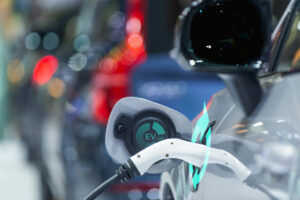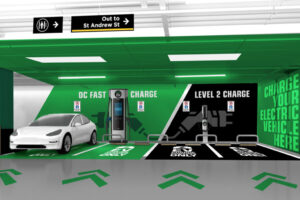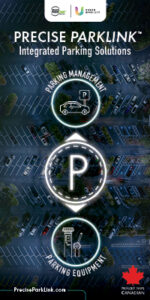Electric Vehicle Performance in Extreme Winter Conditions
By Wayne Sum and Bill Franklin
Introduction
Few denizens of Canadian cities give thought to the sophisticated and robust civic infrastructure and organization that enables a safe and enjoyable life whether uptown, downtown or in suburbia. Clean, well lit, well built and maintained streets, effective policing, parking, garbage collection, water and sewage, libraries, parades, medical centers among a multitude of other services all directly impact the satisfaction and safety of city residents.
Management of a dynamic and resilient city will consider key factors that can be employed in an emergency, whether it be political protests, rampant homelessness to fires, flooding or intense cold and blinding snow.
As the fires in California vividly attest, global warming and drought has intensified the desire to reduce reliance on internal combustion engines in favour of electric vehicles that get their energy for locomotion directly from the sun, wind or water (hydroelectric). In this article, we look at the challenges of achieving an all-electric fleet while retaining the resilience required from municipal services.

Massive fires in Ventura county California, seen by author driving on Highway 101 from LA to Santa Barbara on November 6, 2024.
Consideration of EV’s touch on the following topics:
- Saskatoon’s Electric Vehicle goals
- Electric Vehicle (EV) performance in general
- A closer look: Nissan Leaf
- Winter Driving Conditions and impact on EV driving range
- Theoretical look at
- Impact of cold on battery performance
- Impact of cold on power consumption
- Real World Tests: Consumer Reports, American Automobile Association
- City of Saskatoon’s pilot EV experience
- Recommendations to advance electrical vehicle utilization
The road to reducing Saskatoon’s carbon footprint starts here…

By Ebby Zachariah and Chris Perry
Over the past 20 years mixed-use development has become a staple of urban development in Canadian cities. It’s easy to see its appeal for developers and property owners. By combining several different use cases within a single development, developers and owners can benefit from a variety of potential revenue sources. And the diversity of uses can provide stability because when one sector slows down there will be one or more other uses remaining to pick up the slack.
Typically, owners and developers—and urban planners, for that matter—view mixed use solely in the traditional context of a development combining parking, and then some mix of retail, commercial, residential, and/or entertainment development. But there’s another form of mixed-use development that’s worth considering: parking. Yes, just parking.
As parking professionals, we instinctively understand how a development that revolves solely around parking can be an example of mixed-use. Most parking facilities serve multiple user groups. These groups have different needs, use parking assets differently, and may pay different rates. This is true of commercial, residential, and even institutional development with parking assets.
When parking owners start to think about their parking assets in this context, it opens up a whole new world of revenue and tenant amenity opportunities.
A Whole New Ballgame: Parking Management Technology
Until recently, it wasn’t possible to manage parking assets effectively and efficiently when there were multiple use cases. Parking had to be treated as an afterthought at best—and a throw-in at worst—because parking management wasn’t automated. It was just too costly and time-consuming to manage different parking use cases by hand.
With the emergence of parking management software platforms, however, owners can now manage each user group differently, providing access to specific areas of a parking facility, offering access at…
By Chris Scheppmann
The proliferation of parking guidance technology has arguably been the most important parking technology trend over the past ten years. The past decade has seen guidance evolve from a valuable tool that many owners considered a luxury to an essential element of parking management. And with maturation of the smart city movement and the introduction of smart city platforms like the Park Detroit app, parking guidance has emerged as the indispensable parking and mobility technology.
Until recently, parking owners were faced with a significant cost/benefit tradeoff when selecting parking guidance technology. There were only two options: expensive single space sensor systems or inexpensive in-motion loop systems. For years, the single space sensor was the gold standard. They are very accurate, but also very expensive. A complete over-the-space sensor system could cost anywhere from $500 to $750 per space, given infrastructure limitations and signage requirements. So, for a garage with just five hundred parking spaces, the cost of installing a reliable guidance system would be around $250,000 and could run as high as $375,000. And that’s just the initial installation cost. There may also be maintenance and repair costs to factor in.
Traditional in-motion counting solutions, on the other hand, such as loops or ultrasonic sensor technologies are inexpensive. But they are also very inaccurate. These systems count vehicles as they enter and leave a parkade, using vehicle sensing technologies. While these systems are much less expensive than single space sensors, they are also considerably less accurate. They also typically operate as stand-alone systems and can’t be integrated with other platforms or software.
However, in recent years, the introduction of vision-based Intelligent Camera technology has filled the gap between single-space and traditional sensor systems for in-motion car counting. Intelligent camera technology leverages the latest advancements…
By Adamo Donatucci
Electric vehicles (EVs) are becoming increasingly popular in Canada as the country aims to achieve its 2050 zero-emissions goal, a target set to significantly reduce greenhouse gas emissions and combat climate change. Developing a robust EV charging infrastructure is no longer a future idea; it’s here. This makes now the ideal time for parking facility operators to prepare their facilities for this transition.
Understanding the EV Landscape in Canada
The electric vehicle market in Canada is experiencing rapid growth, driven by a combination of government incentives, charging preferences, and advancements in EV technology. Consumers today expect parking facilities to offer reliable and convenient charging options. With the growth of EVs, parking operators must stay ahead of these expectations by providing adequate charging infrastructure. This is not just about meeting current demand but also preparing for the future as more Canadians switch to electric vehicles. Understanding the regulatory environment is crucial, as compliance with local laws and standards will be necessary to successfully deploy EV infrastructure.
Assessing Current Infrastructure and Future Needs
Before installing EV infrastructure, parking facility operators need to conduct a comprehensive assessment of their existing facilities. This includes evaluating the current electrical capacity, layout, and potential areas where electric vehicle charging stations can be installed. It’s essential to consider both current usage patterns and potential future needs to ensure that the infrastructure will be adequate as the number of EVs grows.
Choosing the Right EV Charging Technology for Your Operation
Selecting the appropriate type of EV charging station is a critical decision for parking facility operators. There are several types of chargers, including Level 1, Level 2, and DC fast chargers, each suited for different scenarios. Choosing technology that integrates seamlessly with existing parking management systems is important to provide a smooth…
As cities around the world shift towards sustainable transportation, the collaborative efforts of both public and private sectors in expanding electric vehicle (EV) charging infrastructure are becoming increasingly vital. In Toronto, where transportation accounts for about 32.5% (Opens in a new window) of all greenhouse gas emissions, the push for electric vehicles is a crucial element of the city’s strategy to achieve net zero emissions by 2040.
Toronto has set a goal of reducing greenhouse gases by 65% by 2030. How can a shift to EVs help reduce the city’s carbon footprint and what steps do we need to get there?
To help answer these questions, we sat down with Ian Klesmer, Director of Strategy and Grants with The Atmospheric Fund to learn more about the steps Toronto must take to support the growth of EVs.
Let’s talk a bit about the role the public sector should play when it comes to EV charging. Why should cities be involved in this space in the first place?
Ian Klesmer: All levels of government have climate commitments and carbon reduction goals, and electric vehicles are a crucial part of achieving these goals. But it’s still a nascent sector that needs public support, especially until industry becomes more mainstream and reaches a tipping point. The public sector can help accelerate and scale EVs through incentive programs, smart policy frameworks and direct investments.
At the local level, hundreds of cities across Canada have declared climate emergencies and are actively seeking new and effective ways to reduce their carbon footprints. In urban environments, transportation is a major source of emissions, often second only to buildings. A wide range of actions are needed to reduce emissions from the transportation sector, including expanding cycling and transit options and densifying cities. However, from strictly a carbon…
By Bill Franklin
The Electric Vehicle revolution is everywhere, featured in news headlines, YouTube EV Road reviews, endlessly analyzed in business publications, pursued and promoted by politicians. This amazing sea change after 120 years of the internal combustion engine (ICE) has inspired city councils to mandate fleet services switch to electric. Alas, this is where the rubber hits the road, and reality and reason collide with aspirations.
The City of Saskatoon’s Parking management is a client of our company and approached us to evaluate the feasibility of switching their LPR vehicles to all electric. We already had installed autoChalk LPR on electric vehicles elsewhere and it had minimal impact. But cold temperatures significantly impact battery performance and increase a vehicle’s energy consumption. We were intrigued to join them as part of
their analysis.
Since the internal combustion engine has been around for over a century, engineers and manufacturers have improved both the engines and vehicles to face extreme cold. At times Saskatoon dips to minus 50°C yet their diesel- and gas-powered vehicles, trucks, tractors, snowplows, SUVs are out in the field doing their job.
What then should be expected of an electric vehicle?
• Operates in temperatures from -50°C to +40°C.
• Runs all day on a tank of fuel or an electric charge.
• Starts up reliability every morning and runs all day, month after month.
• Is comfortable to drive, has storage space, can have equipment mounted to it (e.g., License Plate Recognition equipment).
• Fleet services can maintain it and get parts.
• Purchase price of CAD$40,000 or less for an EV SUV.
• Maintenance cost is reasonable.
• Infrastructure cost is affordable.
Tesla and Nissan have been producing electric cars and SUVs for fifteen years and Toyota has sold the very successful Prius hybrid…
By: Jeffrey Dea, Vice President, Business Development, Toronto Parking Authority
The International Energy Agency reports that, despite a pandemic disrupted and turbulent year, sales of Electric Vehicles (EV) broke all records in 2021, and there is no sign this trend is waning in 2022.
From innovative battery technology to new EV models hitting the roads, there is no question that the stage is set for the EV market to reach its true potential and transform the way we travel. However, Toronto still faces a significant barrier to progress in this market – the lack of a comprehensive and publicly accessible EV charging network.
As adoption takes hold, EV owners will demand a charging network that offers simplicity, speed, choice, and ease of use. Toronto Parking Authority (TPA) is an important ingredient in meeting consumer demand in this regard, and our vision to become the world’s best provider of sustainable parking, bike share, and last-mile mobility experiences, strategically positions us to be a catalyst for EV adoption. We strive to meet our customers’ expectations every day, and we see our role in the transition to EV as an exciting opportunity, but there is no time to spare.
The increase in EV ownership is creating a demand that we need to meet now. In addition, the City of Toronto’s TransformTO Strategy, launched in 2017, calls for a reduction in community-wide greenhouse gas (GHG) emissions in Toronto to net zero by 2040 – 10 years earlier than initially proposed. The strategy establishes 2030 goals that will see 30 percent of all registered vehicles on the road be electric and 75 percent of school/work trips under 5 km either walked, biked, or taken by transit.
Aligned with the global push for sustainability measures, Toronto’s net zero strategy is ambitious, and…












